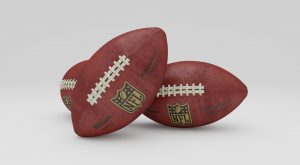NFL Player Lane Johnson Sues Nearly All Concerned, and Loses
(Editor’s Note: The following excerpt is from an article written by former Oakland Raiders General Counsel Jeff Birren, a long-time senior writer with Hackney Publications. The complete article can be access by subscribing to Professional Sports and the Law.)
Philadelphia offensive tackle Lane Johnson is a better football player that a litigant. In 2016 Johnson failed a test for a performance-enhancing substance, leading to a suspension by the NFL. Johnson responded by filing a grievance. He lost, so he sued to overturn the suspension and sought damages. Once his case was moved to the correct court, he lost again and appealed to the Second Circuit. On July 17, 2020 the Second Circuit affirmed the District Court.
The Facts
Johnson played college football first at Kilgore Junior College and then transferred to Oklahoma. He played tight end and defensive end before switching to offensive tackle in 2011. In 2013 Philadelphia selected him with the fourth pick of the NFL Draft and he started all 16 games that season. In May 2014 Johnson “tested positive for a performance-enhancing substance and served a four-game suspension” (David Lane Johnson v. National Football League Players Association (“NFLPA”) National Football League (“NFL”) and National Football League Management Council (“NFLMC”), (“Johnson”), U.S. Court of Appeals, Second Circuit, Case No. 19-2734-cv, (July 17, 2020) “Summary Order” at 3).
Johnson appealed, claiming that he had made a mistake because the drug was prescribed to him by his family physician who did not know the NFL rules. He lost, and thus became subject to reasonable cause testing up to 24 times a year (Sports Illustrated, Michael McCann, “Lane Johnson’s Bold Move” (“Bold Move”) (1-11-17)). There is an adage that one “who does not learn from history is bound to repeat it” and so it was to be for Johnson.
In January 2016 Johnson signed a six-year contract extension for over $63M, making him the NFL’s highest-paid right tackle. For reasons unstated, Johnson “twice” ingested “a prohibited substance that he had obtained from an anonymous ‘friend’” and in July Johnson was informed that he had again tested positive for a performance-enhancing substance (Johnson at 3). To Johnson the fault lay elsewhere, and with almost everyone else. He “challenged the procedures pursuant to which his urine same was collected and analyzed” and filed a grievance (Id. at 3/4). He went public with his complaints and “believed that other persons, groups and even the government were at fault” (Bold Move at 3). He “attributed the positive result to taking an amino acid supplement, manufacturers of which Johnson has threatened to sue for incorrectly listing ingredients. Johnson also blamed the NFLPA for providing players with an app designed to inform players about approved and disapproved substances” and even “criticized the U.S. Food and Drug Administration’s lack of regulation over supplements” (Id.). Johnson asked that the “B” sample be tested and that also came back positive (Id. at 4).
The arbitration went forward. Johnson sought discovery on a number of issues, even how the arbitrator was selected. He objected to the arbitrator, an attorney at Wilmer Hale, alleging conflicts of interest between Wilmer Hale and the NFL and NFLPA. The arbitrator ruled on October 11, 2016 that “the drug test was authorized under” the NFL’s policy and “that ‘none of the collection and analysis issues’ raised by Johnson justified overturning his suspension” (Johnson at 4).
Johnson Heads to The Wrong Court
So, Johnson sued the NFLPA, the NFL and the NFLMC in the Northern District of Ohio (David Lane Johnson v. NFLPA, NFL & NFLMC, (N.D. Ohio, Case # 5:17-cv-0047SL, Document #1, Complaint and Petition To Vacate Arbitration Award (1-6-17) (“D.L. Johnson”). He sought “vacatur of the arbitration award” and asserted “claims against the NFL, the Management Council, and the Players Association for breach of the duty of fair representation, breach of the CBA, and a violation of his rights under the LMRA, the National Labor Relations Act (‘the “NLRA’), and the Labor Management Relations Disclosure Act” (Johnson at 4). Johnson apparently depicted the NFLPA as “as corrupt and incompetent” (Bold Move at 6). Moreover, it supposedly “deliberately withheld relevant and pertinent information” from him and that it “retaliated against Johnson because of its public dispute with Johnson over the poor quality of the NFLPA’s representation” and that this was done “out of personal animosity” (Id.). He also claimed the NFLPA breached its duty of fair representation “’by willfully and fraudulently mislead[ing]’ him about his appeal options and strategies” and “’depriving’ him of the chance to receive and inspect documents germane to his appeal” (Id.).
Johnson was not from Ohio, he did not play college or pro football in Ohio, nor is the NFL or NFLPA office located in Ohio. His only apparent connection to the state is that his lawyer is based in Cleveland. Johnson’s next legal defeat was soon coming.
The defendants responded by filing motions to transfer the case to the Southern District of New York and to stay the Ohio litigation (D.L. Johnson, Memorandum Opinion and Order, Doc. #68, at 1/2 (7-6-17)). Johnson opposed the motions and claimed that he appealed his suspension “from Ohio” (whatever that is supposed to mean) (Id. at 4). He also “appears to be relying upon the fact that Cleveland, Ohio has an NFL team (the Browns) as the basis for venue” and thus the NFL and all of its teams were residents of Ohio (Id. at 6). To the Court at least, “the issue is quite simple: is the Northern District of Ohio the appropriate venue for a case that: involves a plaintiff from Oklahoma who plays professionally for a football team that operates out of Philadelphia, Pennsylvania, and three defendants who are headquartered in New York, NY, New York, NY, and Washington, DC, respectively” and that sought to set aside an arbitration that took place in New York City (Id. at 4).
The Court found that venue was not proper in Ohio and that even if it was it would still grant the motion to transfer “to a more convenient forum” (Id. at 6). Thus, the parties were back in “New York, NY”. With the case now in its proper venue, Johnson did not have to wait long until his next judicial loss.
In the Right Court
The NFLPA, NFL and NFLMC filed motions to dismiss. The case had the ironic twist of placing Daniel Nash of Akin, Gump, long-time counsel for the NFL and NFLMC, and Jeffrey Kessler, one of the NFLPA’s counsel, on the same side. Usually they are on opposite sides of NFL-NFLPA cases. Johnson opposed the motions. On October 3, 2018 the Court confirmed the arbitration award, denied Johnson’s petition for vacatur, and dismissed Johnson’s duty of fair representation claim against the NFLPA because “Johnson had failed to plausibly allege that the Players Association acted in an arbitrary or discriminatory manner or in bad faith, or that their actions had seriously undermined the arbitral process” (17-cv-5131(RJS), Case Doc. #124, (S.D. N.Y) LEXIS 225346), (Johnson at 4). It denied the motion as to one claim “because it concluded that the Players Association had failed to provide a copy of a side agreement relating to the timeline for reasonable-cause testing” (Id. at 4/5). That document was soon forth-coming (Id. at 5).
Johnson’s next loss came a month later when the Court granted the NFL and NFLMC’s motion to dismiss, “holding that …
The rest of the article and others like it can be viewed by subscribing to: https://professionalsportslaw.com/
